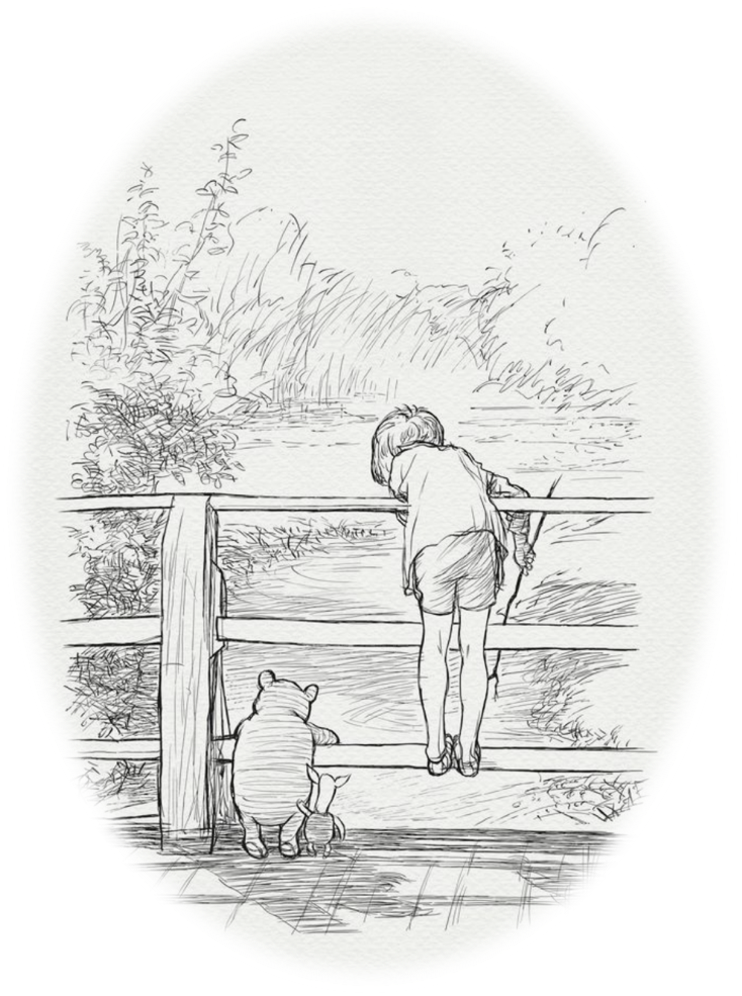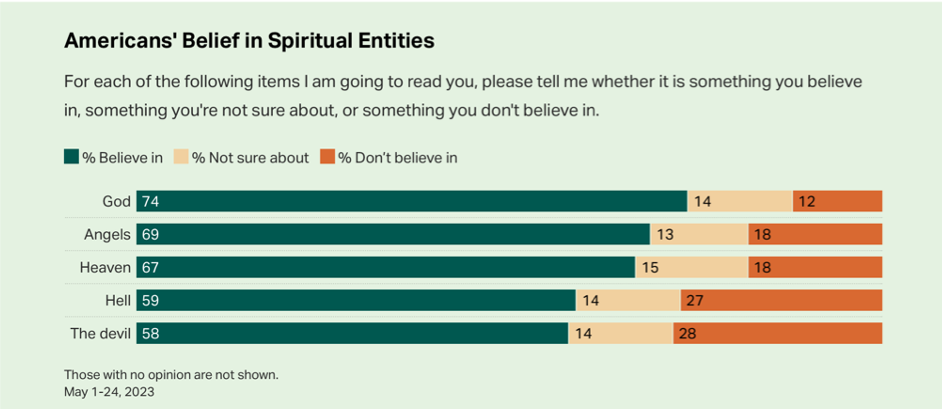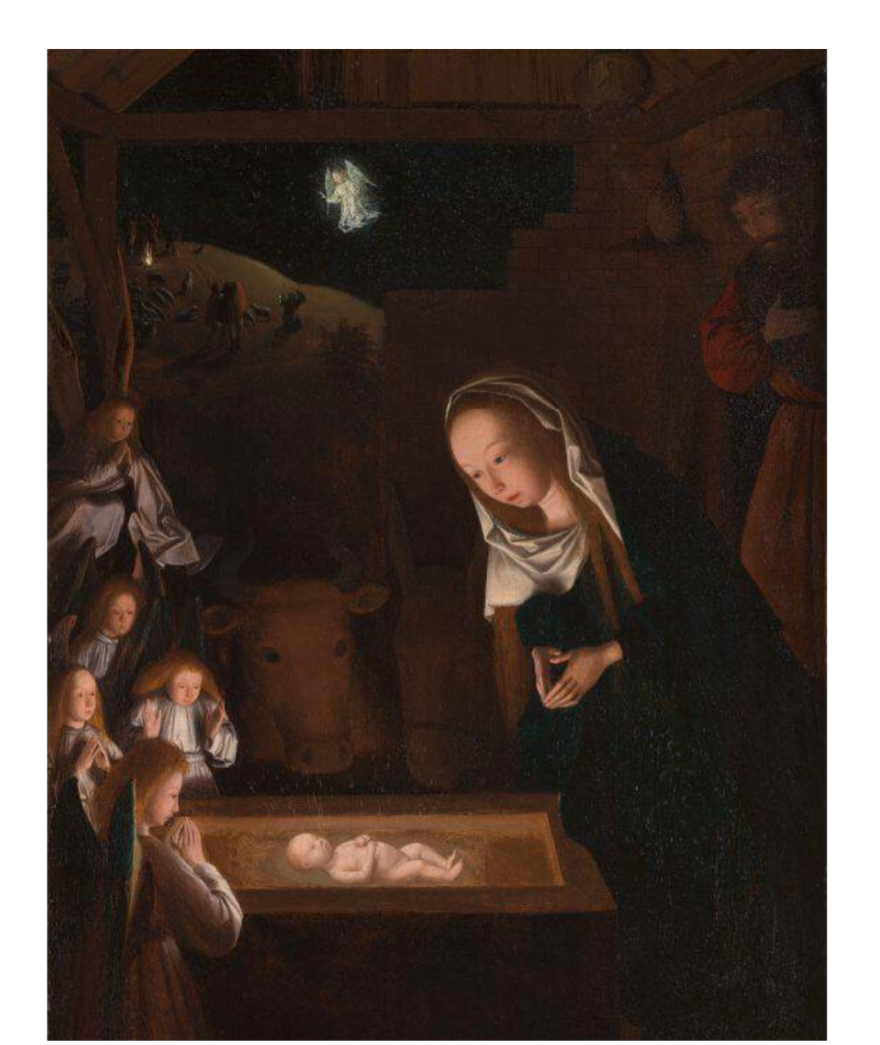
SESSION 3 | A Supernatural World

With simplicity and wonder, Christopher Robin explains to his friend Winnie the Pooh how to make heads or tails of this world: “Sometimes, if you stand on the bottom rail of a bridge and lean over to watch the river slipping slowly away beneath you, you will suddenly know everything there is to be known.”[1]
This session is devoted to standing “on the bottom rail of a bridge. . .” to gather wisdom for the road ahead. We will need it.
Before we push into Zechariah 3:1-7, it’s best to pause for a sidebar discussion about our worldview— the perspective or framework for how we understand the world.
We each come to this study as participants in a high-tech society dominated by naturalism—the premise that nothing exists beyond the natural world, including spiritual or supernatural realities.
“You,” your joys and your sorrows, your memories and your ambitions, your sense of personal identity and free will, are in fact no more than the behavior of a vast assembly of nerve cells and their associated molecules [2] . . . Whatever knowledge is attainable, must be attained by scientific methods; and what science cannot discover, mankind cannot know.[3]
Subtle assumptions based on a naturalistic worldview can be found throughout our culture, shaping how we understand and engage with all of life. In his book The Shallows, Nicholas Carr describes the aims of Google, a company at the forefront of our expanding high-tech culture.
It [Google’s mission] suggests a belief that intelligence is the output of a mechanical process, a series of discrete steps that can be isolated, measured, and optimized. In Google’s world, the world we enter when we go online, there’s little place for the fuzziness of contemplation. Ambiguity is not an opening for insight but a bug to be fixed. The human brain is just an outdated computer that needs a faster processor and a bigger hard drive.[4]
Eliminating ambiguity —i.e., subjectivity—leaves no room for anything that exists
Supra-nature. In a world of binary information bytes, where all knowledge is known and quantified, there is no rationale for prayer, reflection, contemplation, or the mystical, e.g., God.
Our study of Zechariah 3 will surface predictable tension as we stand at the crossroads of society and the sacred—naturalism and a personal faith in Jesus—and engage a 2,500-year-old prophetic dream involving Satan, angels, and a supremely polluted high priest.
For example, a Gallup Poll from May 2023 indicates that 42% of Americans do not actively believe in Satan.

It is best to acknowledge the road we will travel as we consider all God has in store for us through this study.
A Platform for Believing
Two fundamental beliefs distinguish biblical Christianity from naturalism and provide a platform for our work ahead.
First, the Christian faith expressed in the Bible is uncompromisingly supernatural (e.g., Virgin birth, miracles, resurrection). If we remove the supernatural, we remove Christianity. At the heart of the worldview of both the Old and New Testaments is the idea that the realm of nature is created by One who transcends it—that God Himself is “supra” or above and beyond the created universe.
Without the resurrection, there is no Christianity. There is no evidence of any form of early Christianity in which the resurrection was not a central belief. Nor was this belief, as it were, bolted onto Christianity at the edge. It was the central driving force, informing the whole movement.[5]
Second, that God is a Creator God who fashions us in His image, calling us “the apple of His eye,” “His treasured possession,” and “His glory.” He invites us into His forever family and chases us through the corridors of history, committed to preserving our greatest joys. This is where we get our identity and worth as sacred and beloved.
A biblical framework for understanding our world gives us a foundation for engaging Zechariah 3:1-7 with anticipation and real hope for how God wants to meet us.
The Authentic Christian Life is Supernatural
While Christianity is a supernatural worldview, the Bible also characterizes the everyday Christian experience as supernatural. Christ-followers are animated by the Holy Spirit, who dwells within each one, providing wisdom, teaching, guidance, and empowerment.
This is the biblical understanding of the normative Christian life.
The caution here is accepting an alternative definition of “Christian” and getting distracted and detoured into spiritual misdirection.
The Problem of Homonyms: The Meaning of “Christian”
Homonyms are words spelled or pronounced the same but have different meanings. For example:
Lie can mean “not true” or “horizontal or resting position.”
Train can be a noun that describes a locomotive or a verb that means to learn skills through instruction and practice.
Bark can mean a dog bark or tree bark.
So, what does “Christian” mean? Is it someone who:
- Is a member of a church?
- Follows the ‘Golden Rule’?
- Was born in America?
- Is religious and has high morals?
- Was baptized in a Christian church?
- Attends church, reads the Bible, prays, and tithes?
- Believes in God?
None of these are valid definitions of an authentic Christ-follower if the Bible is our measure of faith.
Cultural Christianity and the Meaning of “Christian”
The chart below compares three general expressions of faith, all commonly identified as “Christian.” (Note that these basic categories have many different expressions.)

The Christianity of the Bible is a personal and experiential living encounter with Jesus yielding unmistakable whole-person transformation in the image of Christ, which includes a creative and courageous love for others.
The Bible describes a relationship with Jesus as supernatural— an ongoing, life-changing, dynamic experience rather than an affiliation or tradition.
Reflection
John 15:1-11 (NASB)
“I am the true vine, and My Father is the vinedresser. 2 Every branch in Me that does not bear fruit, He takes away; and every branch that bears fruit, He prunes it so that it may bear more fruit. 3 You are already clean because of the word which I have spoken to you. 4 Remain in Me, and I in you. Just as the branch cannot bear fruit [d]of itself but must remain in the vine, so neither can you unless you remain in Me. 5 I am the vine, you are the branches; the one who remains in Me, and I in him bears much fruit, for apart from Me you can do nothing. 6 If anyone does not remain in Me, he is thrown away like a branch and dries up; and they gather them and throw them into the fire, and they are burned. 7 If you remain in Me, and My words remain in you, ask whatever you wish, and it will be done for you. 8 My Father is glorified by this, that you bear much fruit, and so [g]prove to be My disciples. 9 Just as the Father has loved Me, I also have loved you; remain in My love. 10 If you keep My commandments, you will remain in My love; just as I have kept My Father’s commandments and remain in His love. 11 These things I have spoken to you so that My joy may be in you, and that your joy may be made full.
Jesus describes what to expect in a relationship with Him
Notice the movement from intimacy to fruitfulness to joy. (Henri Nouwen)
Jesus describes a life anchored in a living encounter—His life flowing through ours, just as vine sap flows through an attached branch. By “remaining/abiding/making our home” in Jesus, our life becomes animated by His life within us. This is the language of a shared reality, of . . . encounter.
REFLECTION QUESTIONS

What feels inviting about the kind of relationship Jesus describes?
What feels intimidating about it?
How might your life be different if this kind of attachment to Jesus were fully functioning? What might change?
Ponder
God often meets us with a word, inspiration, or invitation as we prayerfully ask Him to speak to our hearts as we reflect upon and interact with a photograph, icon, painting, or other visual representation. As we get outside of our left-brain experience of life, we begin to be attentive to the ‘rest of us.’

The Nativity at Night
Geertgen tot Sint Jans (c. 1490)
Here is the supernatural on full display through the traditional Christmas story: the infant Christ, lying in the manger, watched over by Mary, Joseph, and adoring angels, while an ox and donkey peer out of the darkness behind. Through the crumbling back wall, we see shepherds and their sheep up on the hills, huddled around a fire, their dog beside them. They gaze up in awe at the shining angel in the sky above them. The divine glow from the Christ Child is a pocket of light in the darkness, creating a sense of intimacy and awe that draws us into the scene. See, https://youtu.be/Frbq9W9fh0s
In your time of reflection, what do you notice? What are you drawn to? What invites you?
[1] Milne, A. A., Contributors: Shepard, Ernest H. (New York, N.Y.: Puffin Books, 1992).
[2] Dawkins, Richard, The God Delusion (London: Black Swan, 2007), 57.
[3] Russell, Bertrand, Religion and Science (London: Oxford University Press, 1935), 243.
[4] Carr, Nicholas. “Is Google Making Us Stupid?” The Atlantic, July/August, 2008, 63.
[5] N.T. Wright, The Challenge of Jesus (Lisle, IL: InterVarsity Press) 133.